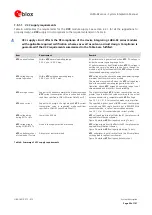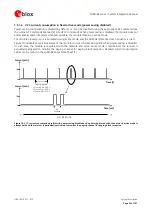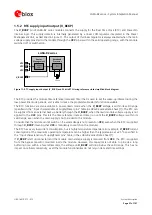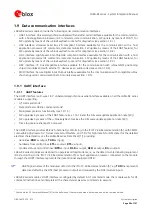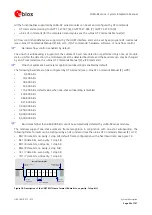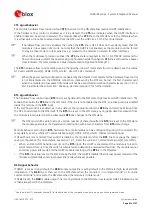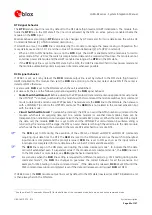
LARA-R2 series - System Integration Manual
UBX-16010573 - R12
System description
Page 34 of 157
1.6.3
Module reset
LARA-R2 series modules can be properly reset (rebooted) by:
AT+CFUN command (see the
u-blox AT Commands Manual
[2] for more details).
This command causes an “internal” or “software” reset of the module, which is an asynchronous reset of the
module baseband processor. The current parameter settings are saved in the module’s non-volatile memory and
a proper network detach is performed: this is the correct way to reset the modules.
An abrupt hardware reset occurs on LARA-R2 series modules when a low level is applied on the
RESET_N
input
pin for a specific time period. In this case, the current parameter settings are not saved in the module’s non-volatile
memory and a proper network detach is not performed.
It is highly recommended to avoid an abrupt hardware reset of the module by forcing a low level on the
RESET_N
input during modules normal operation: the
RESET_N
line should be set low only if reset or
shutdown via AT commands fails or if the module does not provide a reply to a specific AT command after
a time period longer than the one defined in the
u-blox AT Commands Manual
As described in Figure 17, the
RESET_N
input pins are equipped with an internal pull-up to the
V_BCKP
supply.
Baseband
Processor
18
RESET_N
LARA-R2 series
2
V_BCKP
Reset
Power
Management
Reset
10k
Figure 17: LARA-R2 series RESET_N input equivalent circuit description
For more electrical characteristics details, see the
LARA-R2 series
Data Sheet
1.6.4
Module / host configuration selection
The functionality of the
HOST_SELECT
pin is not supported by the “02” and “62” product versions.
The modules include one pin (
HOST_SELECT
) to select the module / host application processor configuration: the
pin is available to select, enable, connect, disconnect and subsequently re-connect the HSIC interface.
The
LARA-R2 series Data Sheet
[1] describes the detailed electrical characteristics of the
HOST_SELECT
pin.

